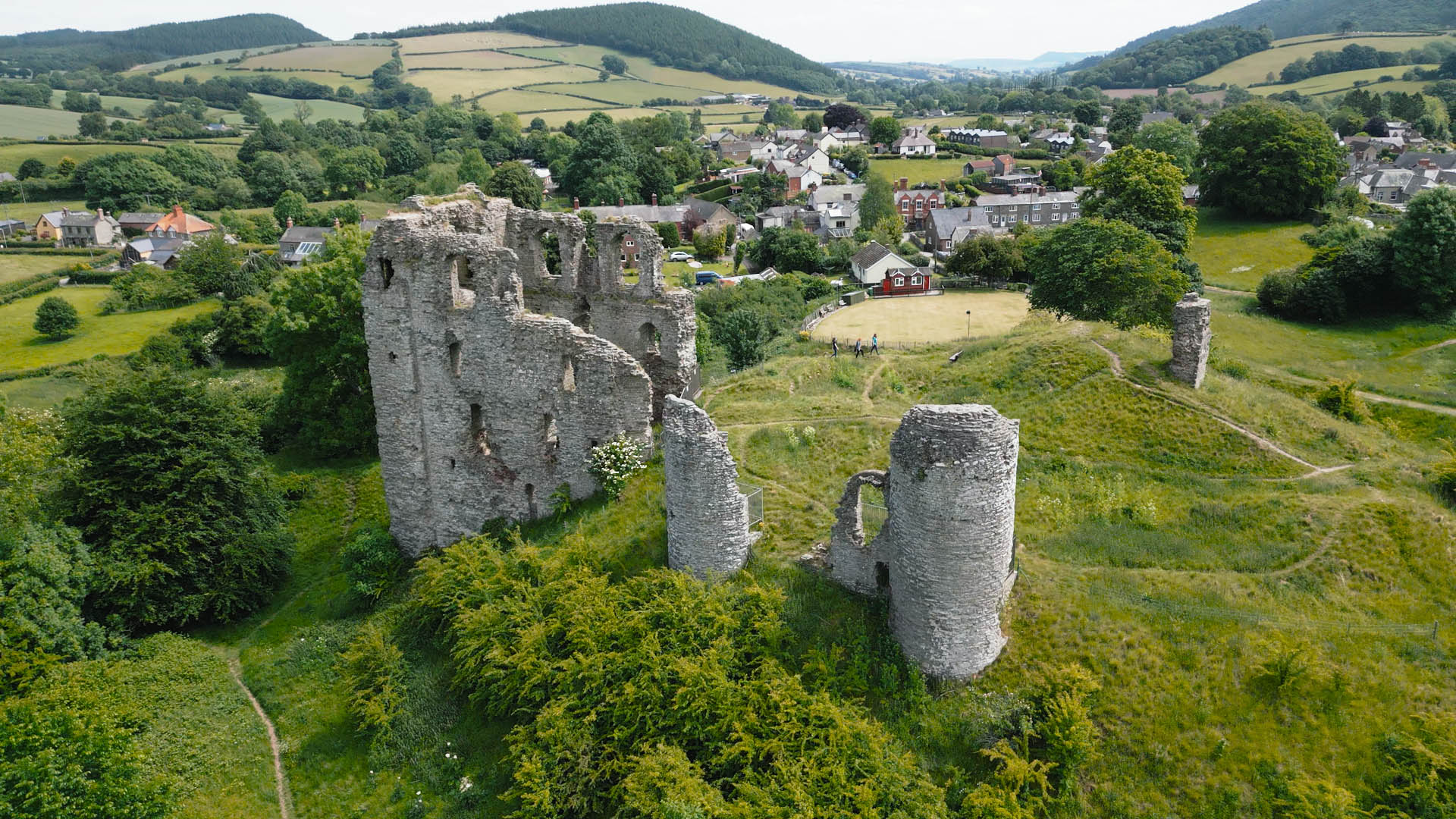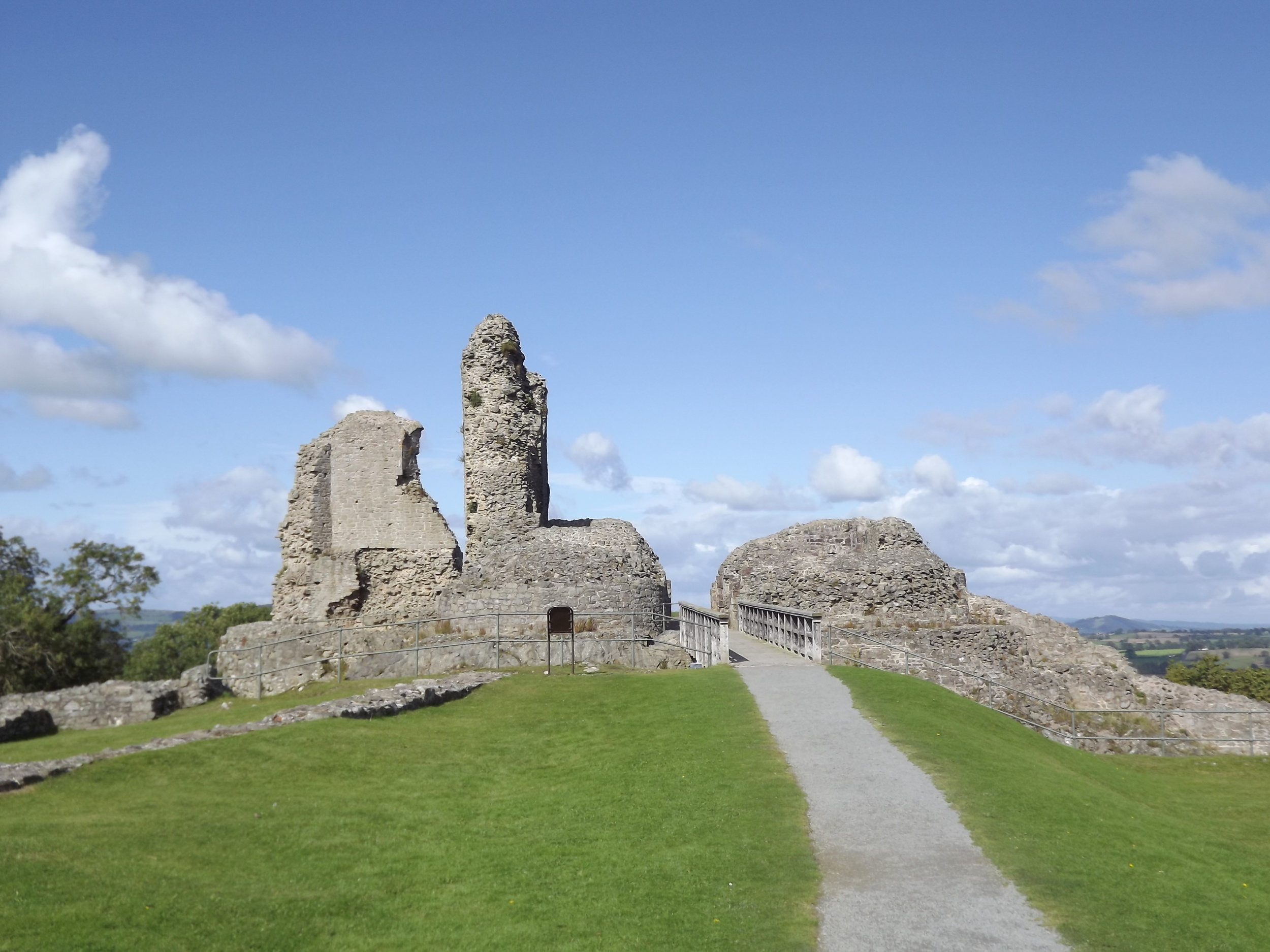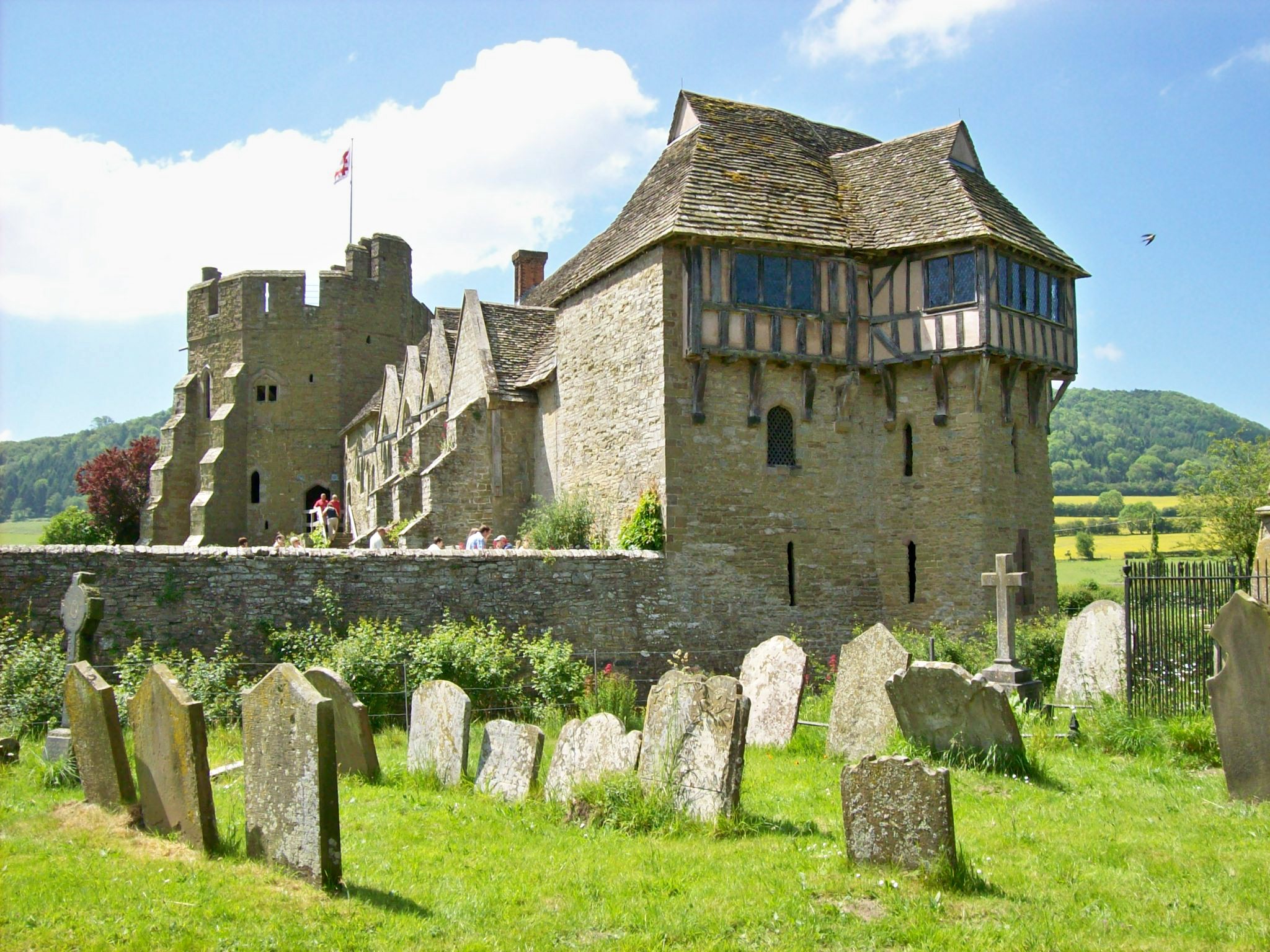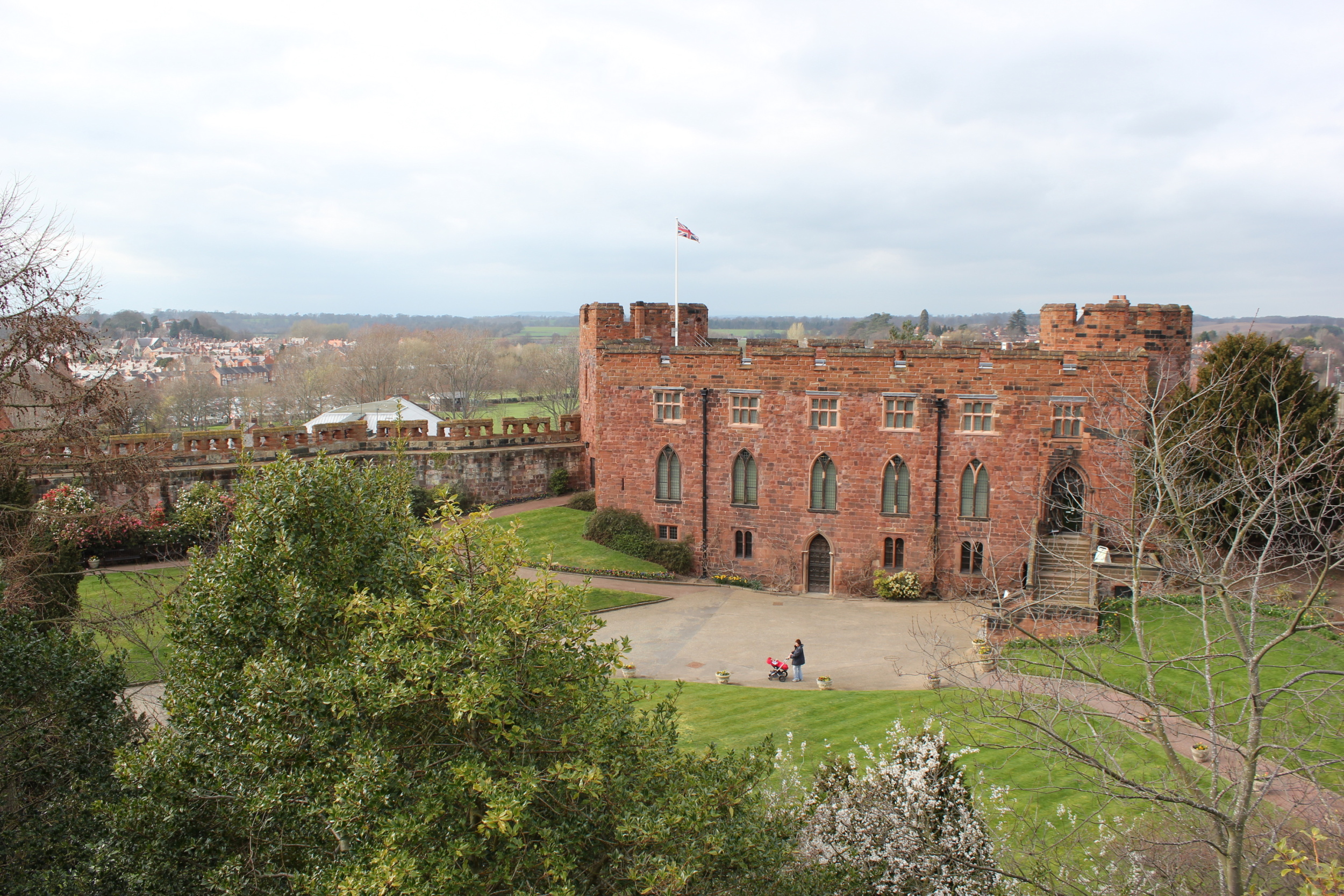Exploring Castles in BC and Beyond
Our guide to castles in Bishop’s Castle & surrounding areas.
Step into the past and uncover the hidden gems of BC and Beyond.
During the Middle Ages, The Welsh border had the greatest concentration of castles anywhere in Europe. At least 250 strongholds along the Shropshire and Herefordshire border, many of which still stand today. Each castle in BC and Beyond holds its own unique story, a testament to the turbulent times and the indomitable spirit of those who built them. From towering fortresses to picturesque ruins, these castles offer a glimpse into a bygone era, where knights roamed the land and battles shaped the course of history.
Castles in BC and Beyond
Bishop’s Castle
Nestled in the heart of this castle-rich region, Bishop’s Castle, as its name suggests, was once home to its very own motte and bailey castle. One of the Bishop’s of Hereford founded it between 1085 and 1127, intending it more as a fortified dwelling than a military fortress. By the 17th century, the castle had fallen into ruin and now only a few walls remain. The top of the motte is now used as a bowling green and the bailey is now occupied by The Castle Hotel.

Corfton The Mount
Little is known about this Norman earthwork motte and bailey fortress overlooking the Corve Dale. Local farm buildings have encroached upon and destroyed the ditch on the north and east sides, but it is still present in other areas.
Caus Castle
Historians believe people built Caus Castle from the ruins of a hillfort and then adapted it during medieval times to create the outer bailey of this castle. On the eastern foothills of Long Mountain, guarding the border between England and Wales, it comprises a high motte with a small summit.
The Civil War destroyed the castle, and later it was dismantled. All that remains now are earthworks and some stone remnants on the motte.
Clun Castle
On the Welsh border, this 11th century Norman Castle dominates the hill overlooking the town of Clun. In 1196, the Welsh attacked and burned Clun Castle. However, the Fitzalan family reconstructed it and made modifications to its structure, resulting in the one you see today. King John attacked Clun during the Baron’s War, which led to the signing of the Magna Carta in 1215.
In the early 1400s, Owain Glyndwr attacked it, although by then the Castle was largely a ruin. Clun Castle served as a hunting lodge, prison, and center for political administration in the area. Builders added a courthouse building in the 16th century. By 1540, people described it as a ruin and it disappeared from the history books.
Hopton Castle
Besieged in a notorious battle during the Civil War, Hopton Castle is a fine example of medieval architecture. Although unclear of the origins, some argue that the castle has features typical of an 11th or 12th-century castle. However, the owner of Hopton Castle may have deliberately built it in an older style, possibly to showcase their status as landowning gentry.
The castle became famous during the Civil War, owned by Parliamentarians, in a largely Royalist County. A diary immortalized the castle, detailing a month-long siege by Prince Rupert's forces in 1644, which led to the eventual surrender of the Castle.
Middlehope Castle
There is very little left of this small, badly mutilated motte and bailey fortress. Sited upon a small ridge are the remains of a low motte, which stood within a banked and ditched, once circular bailey. Historians believe that the builders never completed the construction of the castle.
Dolforwyn Castle
High on the hill above the Severn Valley, the impressive ruin of Dolforwyn Castle. Welsh lord Llywelyn ap Gruffydd originally built the castle. But in 1273, King Edward I wrote to the prince to demand he stop building. The prince replied with a defiant note stating that he didn’t need the King’s permission to build on his own land.
Sadly, his hold was short-lived. Roger Mortimer took the castle after a fortnight’s siege in 1277. The castle fell into ruin by 1398.


Stokesay Castle
Built at the end of the 13th century by Lawrence of Ludlow, one of the richest men in England. Stokesay Castle is an excellent example of a medieval fortified manor house and is one of the best preserved, medieval fortified manor houses in the country. The castle remained in the Ludlow family until 1498.
After that, it passed to the Vernon family, from Derbyshire, ending up in the hands of Henry Vernon. He frittered away the family’s fortune, eventually being arrested for debt in 1596 and being forced to sell the property.
The castle survived the Civil War and was restored in 1660 by William Craven, ensuring its survival. The house later fell into disrepair, being used as a granary and storehouse by local farmers until it found a champion in Frances Stackhouse Acton, an artist and antiquary, who appealed to Lord Craven to save it from collapse.
Castle Pulverbatch
Described as the finest example of a Norman motte and bailey castle in Shropshire, Castle Pulverbatch lies 100 metres north-northwest of Brook Cottage. The motte stands over 20 feet high, surrounded by a deep ditch and was first mentioned in the Doomsday Survey of 1086. Built in the 11th century and granted the right to hold a weekly market in 1254. However, by the end of the 1200s, people described Pulverbatch Manor as the caput baraniae, which means the principal manor of the barony, indicating that by this time they sadly abandoned the castle.
Castles Further Afield
Venturing beyond the town's borders, you'll find a treasure trove of castles waiting to be explored. From the imposing walls of Ludlow Castle to the romantic allure of Stokesay Castle, each destination offers a unique experience and a chance to delve deeper into the region's captivating history.
Ludlow Castle
Described as one of the most interesting castles in the Marches, Ludlow Castle began its life as a medieval fortress, then morphing into a fortified royal palace. Building began in 1085 and continued throughout the years, and has examples of Norman, medieval and Tudor architecture. It also played a part in the infamous tale of the Two Princes in the Tower.
Montgomery Castle
Dominating the town below, Montgomery Castle is one of many Norman castles built on the Welsh border and famed to be the “most-fought-over” castle in Welsh history.
Built in 1223 on the orders of Henry III, it was to deter the growing power of Welsh prince Llwelyn ap Lorwerth, (Llwelyn the Great). During its construction, it was subject to frequent attacks. After the Civil War, they destroyed the walls to prevent any future military use. It became a private residence until 1655, but fell into ruin after leaving what you see today.
Powis Castle
Gruffudd ap Gwenwynwyn built Powis Castle to assert dominance against the powerful princes of Gwynedd. It is also called the Red Castle, because of its red sandstone walls. It’s one of the few castles that has enjoyed almost continual occupation.
Gruffudd died with no male heir. So, in 1309, the castle passed to an heiress, Hawise, who married Sir John Charlton from Shropshire. Descendants of the Charltons continued as Lords of Powis for over 100 years. Then, in 1421, two daughters divided the castle, as it once again had no male heir.
In 1587, Sir Edward Herbert bought the castle, and the family retained ownership of it until 1952, when they bequeathed it to the National Trust.

Shrewsbury Castle
Although we have no definite date for the beginning of Shrewsbury Castle, historians widely agree that it was constructed around 1070 to 1080. It started life as a Norman timber structure, with a wooden keep later replaced by a stone keep.
The castle played a key role in the defense against the Welsh and became crown property in the 12th century. They added a gatehouse and new tower in the 14th century.
During the Civil War, it served as a royalist stronghold. The castle endured a siege for several months before surrendering. The Parliamentarians then partially dismantled the castle to prevent it from being used again.
Plan Your Adventure
Whether you're a history enthusiast, a lover of architecture, or simply seeking a unique and immersive experience, exploring the castles in BC and Beyond promises to be an unforgettable journey. Use our itinerary planner to plan your visit, then lace up your boots, and prepare to step into the past as you uncover the hidden gems of this enchanting region of Bishop's Castle and surrounding towns and villages.

